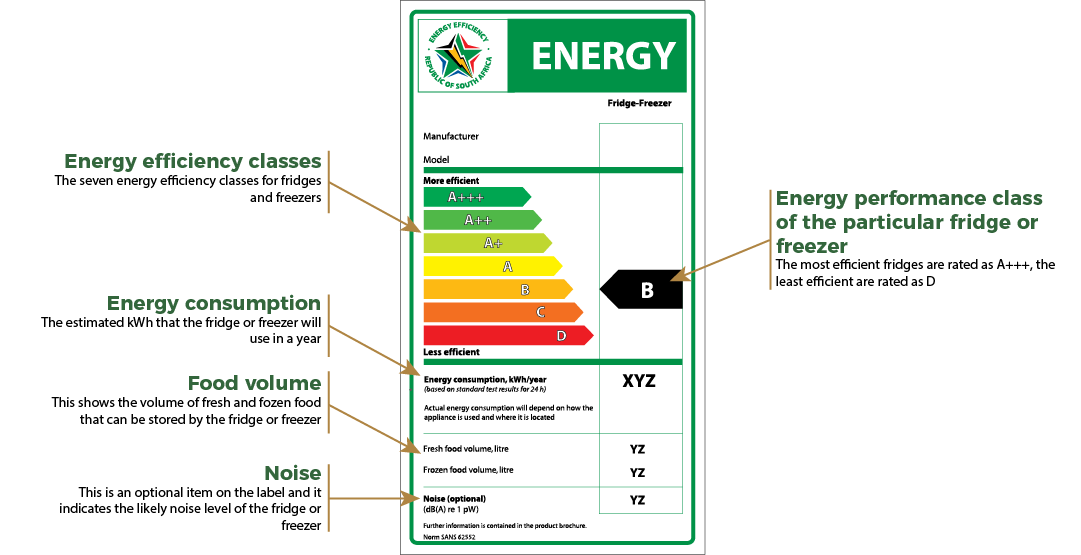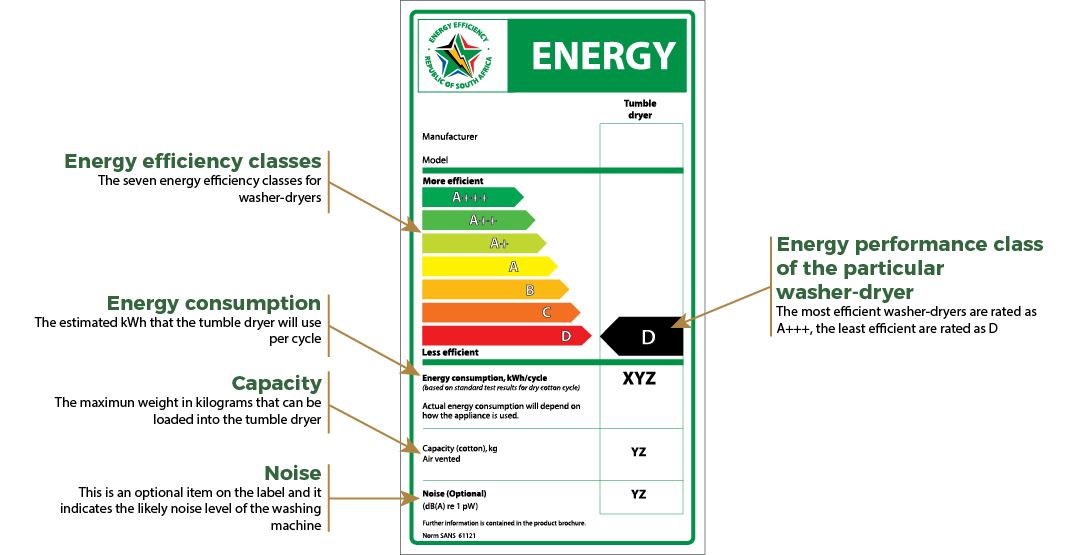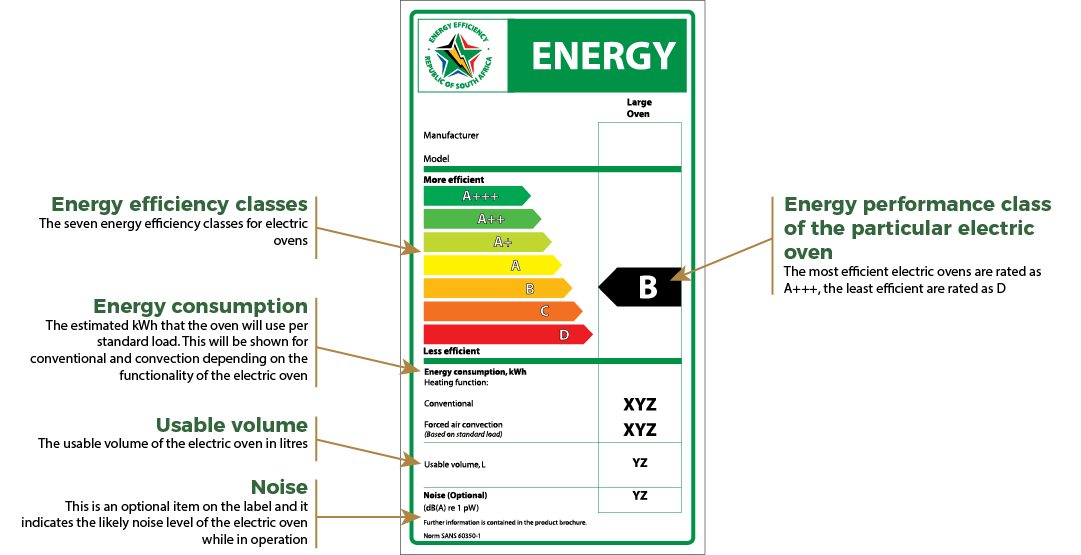Storage Water Heaters
Storage water heaters, which include electric geysers, are typically the largest users of energy in a South African household. Consumers should carefully consider their choice of storage water heaters before making a decision to purchase because of the significant lifetime costs of using a storage water heater.
A key way in which storage water heaters waste energy is through standing loss. Standing loss refers to the heat lost through the surface of the storage water heater. As the storage water heater losses heat through its surface, it has to heat the water it is storing to maintain the target temperature. Standing loss is generally measured in the kWh required to maintain the target temperature in a twenty-four hour period when no water is drawn from the storage water heater.
Since standing loss is such a significant waster of energy, Minimum Energy Performance Standards (MEPS) have been set for the standing loss of storage water heaters. Currently, only storage water heaters with an Energy Efficiency Rating of Class B or better can be sold. The establishment of MEPS for standing loss in storage water heaters will ultimately result in 3,820,000 MWh of electricity savings on an annual basis in South Africa.
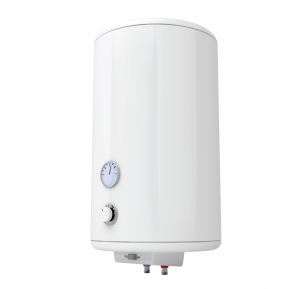
Understanding the energy efficiency label
Storage water heaters being sold must be labelled with a South African Energy Efficiency Label to help consumers understand the relative energy efficiency of different storage water heaters. The image below shows a sample of a label for a storage water heater with an explanation of the key elements of the label.
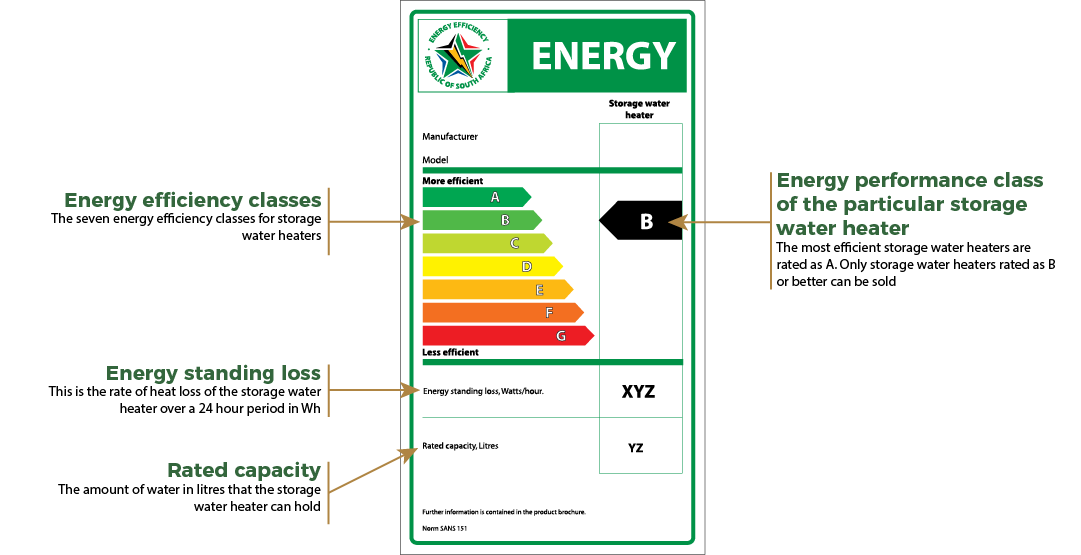
Tips for using your appliance most efficiently
 Insulate the geyser
Insulate the geyser
If a geyser is not already well insulated, a geyser blanket will help keep the water in the geyser warmer for longer, which will reduce the amount of work the geyser needs to do to keep the water warm.
 Turn down the thermostat
Turn down the thermostat
Geyser thermostats are usually set to higher temperatures than required. Reduce the thermostat to about 55-60 degrees Celsius.
 Use less hot water
Use less hot water
Only use hot water when necessary to minimise the amount of work the geyser needs to do. For instance use cold water to wash your hands.
 Install a water saving showerhead
Install a water saving showerhead
Using a water saving showerhead will reduce the amount of hot water required for a shower and as a result reduce the amount of work that the geyser needs to do.
 Shower instead of bathing
Shower instead of bathing
Generally showers use less water than baths. Showering rather than bathing will reduce the amount of hot water required and minimise the amount of work the geyser needs to do.
 Install a timer
Install a timer
Installing a timer on your geyser so that water is only heated when it is required will reduce the amount work required of the geyser.
 Turn off the geyser when you go away
Turn off the geyser when you go away
If no one will be in a house for a few days it unnecessary for the geyser to keep water hot. Turn off the geysers in empty houses.





